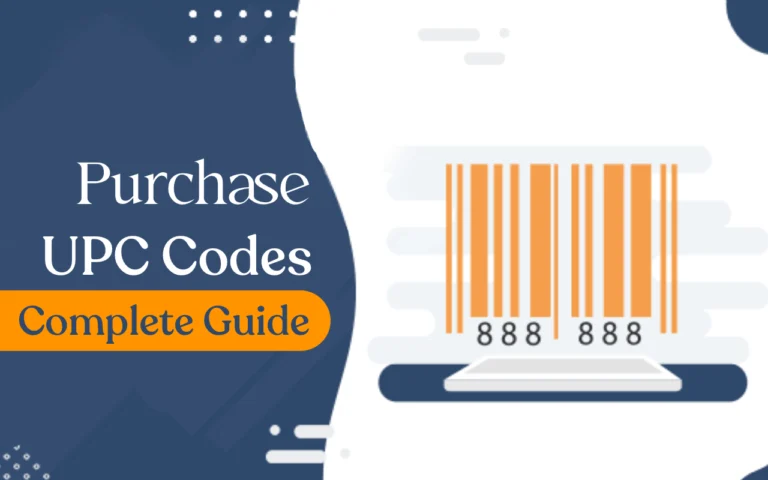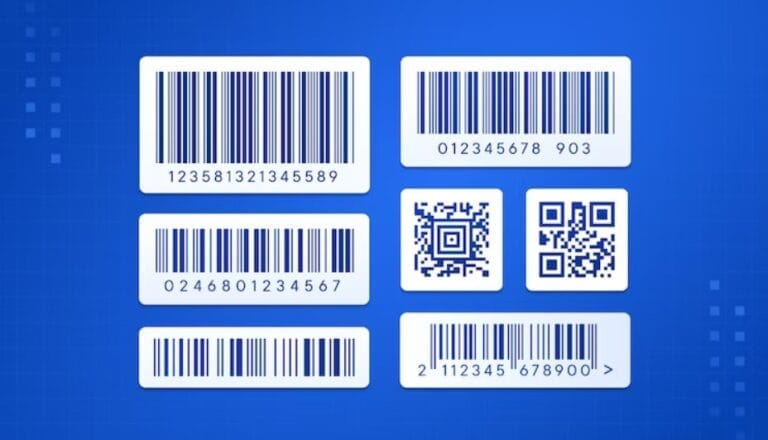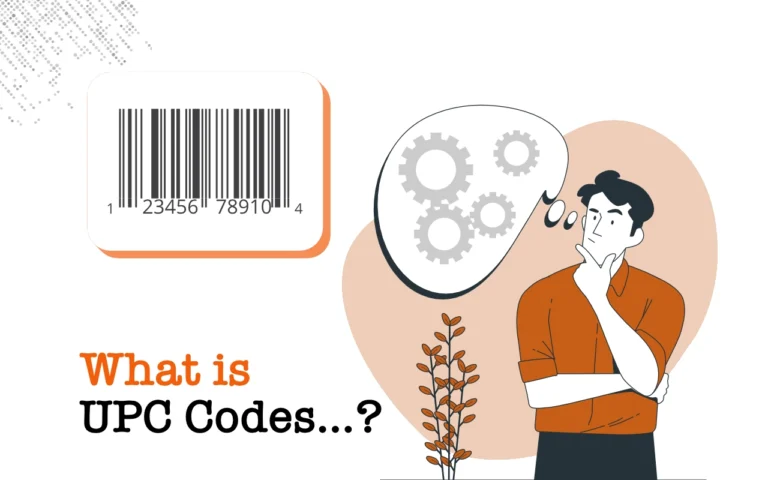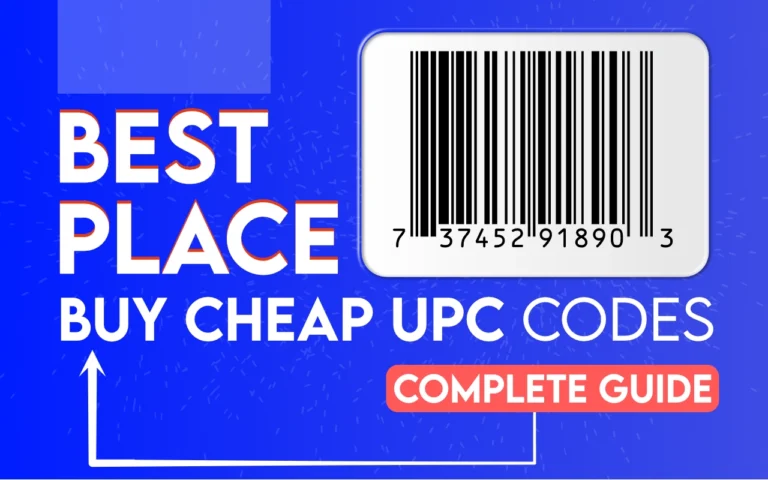
As an Amazon seller, you should already be familiar with UPC codes and what they entail.
There is only one legitimate producer of UPC codes that exists globally, GS1. GS1 (Global Standard 1)is a non profit organization that has set the global standard for supply chain barcoding.
There are more than 100 GS1 organizations around the world – GS1 US is the organization that serves US businesses. GS1 issues unique prefixes to brand owners so that they can create their own unique barcodes containing the prefix number given to them by GS1.
Amazon is already cross checking UPC codes assigned to different ASINs on their marketplace against the GS1 database. This means any seller without authentic GS1 UPC codes are at risk of getting their listings removed, if Amazon decides to go down that route.
Understanding GTINs
Not to be confused with an actual product barcode, GTINs are numbers that identify individual products. You’ll assign each unique product a separate, unique GTIN. The rules for assigning GTINs ensure that every variation of an item is assigned a number that is globally unique.
You create a GTIN by combining a GS1 US-issued Company Prefix number with a unique product number that you assign, plus a check digit that helps to ensure the GTIN is created correctly. A GTIN, along with a U.P.C. barcode, can be used anywhere in the world.


GTINs can be encoded into different types of barcodes. The two primary types of barcodes used on products are UPCs (Unique Product Code) and , EANs (European Article Number).
What are UPC Codes?
The UPC code was the original format for product barcodes. When supply demand in Europe, Asia, and Australia increased there was a need to distinguish each seller by location. GS1 then began allocating specific prefixes for different GS1 member organizations.
While certain prefixes identify the GS1 branch where the prefix was licensed, it does not necessarily specify where that product was made. For example, there is a misconception that all barcode prefixes on American-made products will start with a zero or one.
There are two main types of UPC codes, UPC-E and UPC-A


UPC-A is essentially identical to UPC-E, however UPC-E does not include 0s. That means you will not actually see the 0’s within the barcode, only within the corresponding GTIN.
UPC barcodes are currently the primary barcode used within US and Canada. Although other countries can scan and read UPC codes, most countries outside of US and Canada use EANs.
What are EAN Codes?
EAN or European Article Numbers ( Also known as International Article Numbers) are GS1 issued barcodes that also include Company Prefixes at the beginning of the numeric GTIN, but again, these may not necessarily identify the country where the product was made
There are two primary forms of EANs that are popular among Amazon sellers, EAN-13 and EAN-8, which encode a GTIN-13 and GTIN-8, respectively.


Similar to UPCs, the type of EAN you use depends on various different factors such as product category, and product distribution channel.
For a more detailed explanation of GS1’s various barcodes check out their article.
Remember, Amazon can remove your listing if they discover that your UPC codes don’t match the information found on the GS1 database. It’s important to spend the initial time and money to ensure Amazon success in the long run.
Why Buy Your own Amazon UPC Code?
Amazon requires every seller to register a GTIN with each product listing available on their marketplace. With that being said, sellers can either invest in legitimized UPC codes directly from GS1, or go through a reseller.
There are various UPC and EAN resellers out there who will try to sell replicated UPC codes to satisfy Amazon’s UPC code needs. Many sellers purchase their UPC codes from third party websites due to their cheaper prices, however using resold Amazon UPC codes will cause more harm than good in the long run.
The problem with replicated UPC codes is they could belong to another company and will not link your company with your product.
Since GS1 is the creator of the GTIN system, by definition they are the only validated resource to check barcode validity. If you are buying a reseller’s UPC code off of a 3rd party website like Ebay, that UPC code was probably originally assigned to another company.
Although Amazon has not explicitly said they will remove any listing that does not match the GS1 database, they have warned that such a policy might be enforced in the near future.

Our in-house Amazon expert David Cooley says, “Its important to stay up to date on Amazon’s policies around UPCs.
The recent emphasis on GS1 codes may be just the beginning for brand manufacturers or private labelers”.How Do You Buy a UPC Code for Amazon?
GS1 breaks down the process of buying your UPC code into 4 easy steps.
Step 1: Apply for a GS1 Company Prefix
The first six to nine digits of your barcode are your company prefix. The company prefix is a unique identifier of the product’s manufacturer. Basically as a supplier, your company prefix will remain the same on the barcodes of all your different products. Each product that you offer will then be assigned a unique product code that will follow your company prefix.
Refer to the diagram below for an example:

Image by Bar Code Graphics
There are numerous ways to purchase a company prefix, however it’s important that the company prefix that you purchase can be traced back to your business. Business owners often make the mistake of forging, or unknowingly purchasing their UPC code from a company other than GS1. This not only could lead to legal issues, but can also impact the legitimacy of your brands supply chain as well.
To be safe, it’s recommended to purchase your Amazon UPC codes only from GS1 directly. GS1 has an easy to use outline of how to get your Company Prefix on their website.
The initial setup fee ranges from the low end of $250 but can be as much as $10,000 depending on the how many different products you intend on selling. After the initial fee, GS1 does charge an annual renewal fee to maintain your company prefix. This cost ranges from $50 a year on the low end and around $3000 on the high end.
Although it might be tempting to go through a 3rd party barcode vendor, or find a cheaper UPC code on websites like Ebay, the cost of buying UPC codes from GS1 is much less than the money you can potentially lose by purchasing illegitimate UPC codes.
Step 2: Assign a Unique Product Number
Now that you have your company prefix, it’s time to assign each one of your products unique product numbers. GS1 gives each seller a set number of digits to use for product numbers depending on the number of future products the seller indicates in his or her application.
The seller can decide his or her own numbering system to apply when naming their unique product numbers. One thing to keep in mind is that each SKU of every product requires it’s own unique product number. This means every variety of each individual product needs to be represented with its own product ID.
For example, if you are selling different hats as a product selection. You may have three different color hats (red, white, and blue). Each different hat variation must have it’s own unique product number.
Red Hat: 0001
White Hat: 0002
Blue Hat: 0003
For Amazon UPC codes MUST always total 11 digits. The 12th and final digit is called the “check digit”. This number is calculated by GS1 based on the previous 11 digits of your barcode.
Step 3: Determine How Your Product will Display Barcode
If you have not packaged or designed your labels for your product, you can obtain a digital barcode file directly from GS1 to incorporate in the packaging and labeling of your product. Almost all manufacturers will be comfortable with the idea of working with UPC codes and understand how to incorporate them from a digital file.
If you have already packaged and labeled your products, you can order adhesive barcode labels to stick onto your product or it’s packaging.
It’s important that the barcodes you use are clearly visible, and are accurate to the information on the GS1 database.
Step 4: Order Your Barcodes
Now that the hard part is out of the way, the last step is to order your barcodes. There are numerous different websites out there that specialize in printing barcode labels, GS1 US has a Solution Partner program, where you can find certified barcoding companies familiar with GS1 standards.
Step 5: Place Barcodes
As a seller it’s extremely important to place your barcodes on your product so they are both visible, and scannable. Amazon has very specific directions for sellers to follow when it comes to UPC code placement. Remember, they are most likely using robots to process your inbound FBA shipments. The easier you make the job for them to accept your shipment, the faster you are going to see your products selling online.
Resource URL: https://bit.ly/31rFixd






